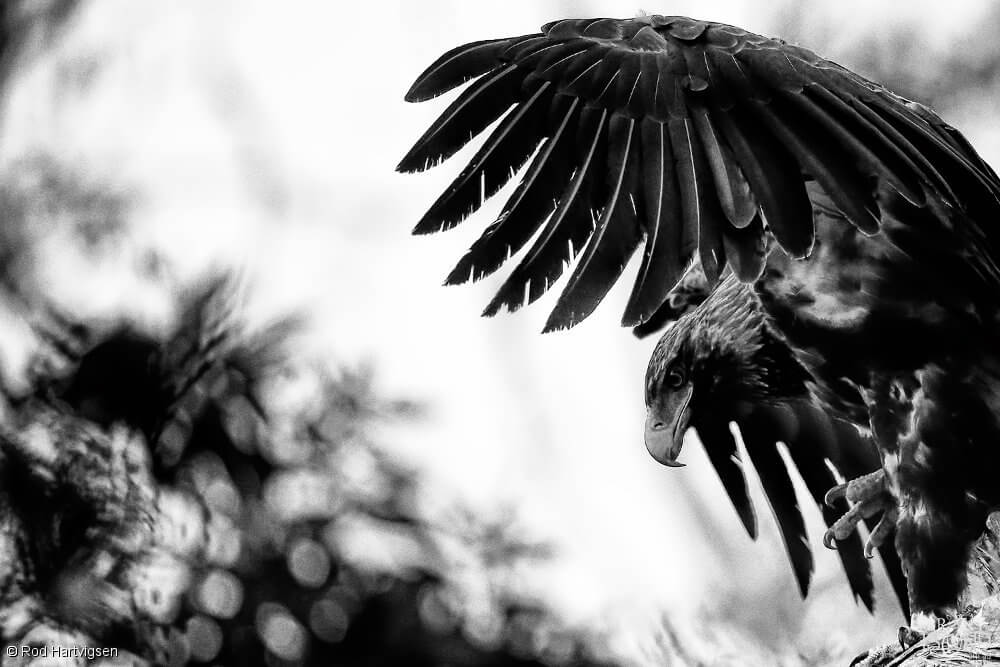Bruny Island Birdlife - Wedge-tailed Eagle
Bruny Island is home to abundant birdlife, including all 12 species endemic to Tasmania. Some are critically endangered, such as the Forty-spotted Pardalote, the Swift Parrot, and the Tasmanian Wedge-tailed Eagle. All 12 endemic species are protected under Tasmania's Nature Conservation Act 2002.
Bruny Island is a popular place for bird watching, and has been named in the top 10 bird watching sites in Australia by Australian Birdlife magazine.
Watch out for the next Bruny Island Bird Festival, (date TBA).
Photos from award winning photographer Rod Hartvigsen
Wedge-tailed Eagle
The Tasmanian Wedge-tailed Eagle (Aquila audax fleayi) is a large bird of prey and can grow over 1m in height and wingspan up to 2.3m
Habitat
The Tasmanian Wedge-tailed Eagle prefers forested land and open plains. They can sometimes be seen perched in trees or on poles, giving them a good view of potential prey.
Behaviour
The Tasmanian Wedge-tailed Eagle is a territorial bird. It mates for life and the pair will build several nests in their territory. Wedge-tailed eagles eat both live prey such as rabbits, birds and wallables, and carrion. Immature birds are more likely to feed on carrion.
Conservation
The Tasmanian Wedge-tailed Eagle is critically endangered. It is estimated there are less than 300 breeding pairs left in Tasmania. The threats to the wedge-tailed eagle include loss of habitat, nest disturbance, electrocution, collision with man-made objects and hunting by man. Wedge-tailed eagles are particularly sensitive to nest disturbance and will not breed if there is visible or audible disturbance, and may abandon a nest entirely. In the past, a bounty was paid to farmers to kill the eagles as they were regarded as a pest that attacked livestock. Now the eagle is protected by federal and state law, but there are still cases of illegal shooting. Conservation efforts have included education programs to prevent nest disturbance, mapping and protection of nesting sites, and installation of bird perches and electrical insulation on powerlines.

